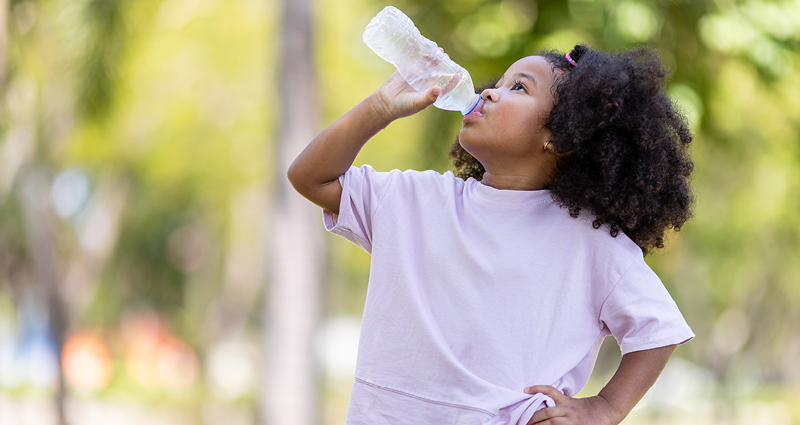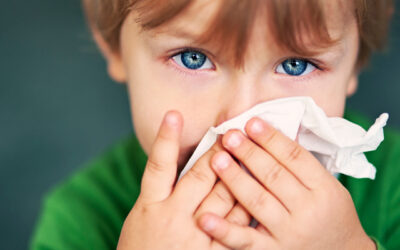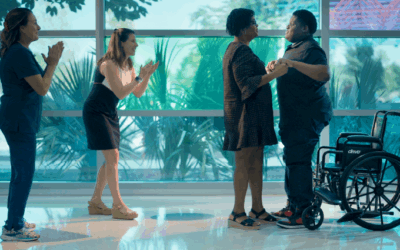When the Southern summer hits full swing, the heat and humidity aren’t just uncomfortable. They can be dangerous, especially for kids.
Children are more vulnerable to heat-related illnesses than adults, and those risks can increase when they’re active outdoors.
Charlotte Sibley, MD, pediatrician with Our Lady of the Lake Children’s Health, wants families to stay ahead of the heat.
“Heat-related illnesses can come quickly,” Dr. Sibley says. “Make sure kids drink water regularly, before they feel thirsty.”
It’s a simple habit that can make a big difference. Here’s what every parent should know to keep kids safe and hydrated this summer.
Encourage Water Breaks Often
Waiting until a child says, “I’m thirsty” can be too late. By that point, their body may already be dehydrated. Instead, encourage regular water breaks throughout the day, especially during outdoor play.
Children may not recognize or communicate early signs of dehydration, which is why building in scheduled water breaks can help.
Tips to make hydration easier:
- Pack a reusable water bottle for every outing.
- Set reminders for water breaks during playdates or sports.
- Make water fun by adding fruit slices like strawberries, lemon or cucumber.
- Offer popsicles made with 100% fruit juice or coconut water for a hydrating treat.
Even when they’re in the shade or around water, like at the pool or splash pad, children can still lose fluids through sweat. Keep fluids flowing all day.
Avoid Midday Outdoor Play
The sun is strongest between 10 a.m. and 4 p.m., and that’s when temperatures and UV exposure are at their peak. It’s also the most dangerous time for heat exhaustion and heatstroke to set in.
Dr. Sibley recommends scheduling outdoor activities for early morning or later in the evening when temperatures are cooler. Even then, it’s smart to keep a close eye on kids’ energy levels and make sure they’re taking breaks to rest in the shade.
Smart scheduling can help:
- Plan trips to the park or playground before 10 a.m.
- Save bike rides, walks or yard play for after dinner.
- Create indoor play options during peak heat hours, like crafts, reading or puzzles.
If outdoor activities must happen midday, keep them short and take frequent breaks in air-conditioned spaces or shaded areas.
Watch for Signs of Dizziness or Nausea
Children can overheat quickly, and symptoms of heat-related illness may start subtly. Dizziness, nausea, headache, confusion and fatigue are all early signs that your child may be getting too hot.
Left unchecked, these symptoms can progress to heat exhaustion or even heatstroke, which is a medical emergency.
If your child shows any signs of overheating:
- Move them to a cooler location immediately.
- Offer sips of water.
- Apply cool, damp cloths to their neck, face and arms.
- Loosen tight clothing and remove hats or extra layers.
If symptoms don’t improve quickly, or if your child becomes unresponsive or vomits, seek medical care right away.
Knowing what to look for can help you respond early and prevent serious complications.
Keeping Summer Fun and Safe
Hydration and heat safety aren’t just about avoiding the ER, they’re about helping kids stay comfortable, energized and ready for summer fun. The good news? With a few proactive steps, most heat-related illnesses are entirely preventable.




